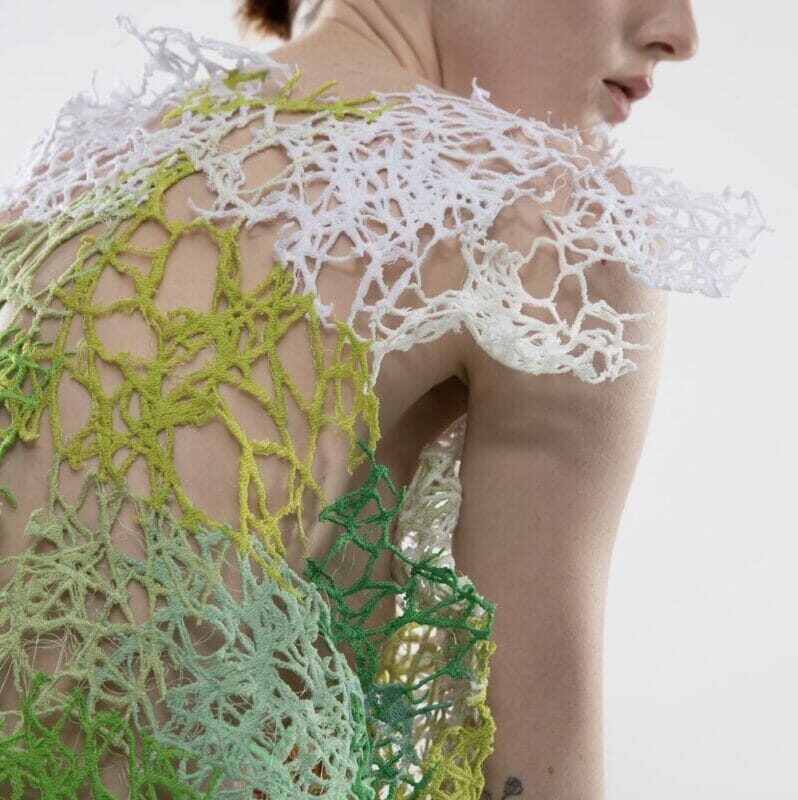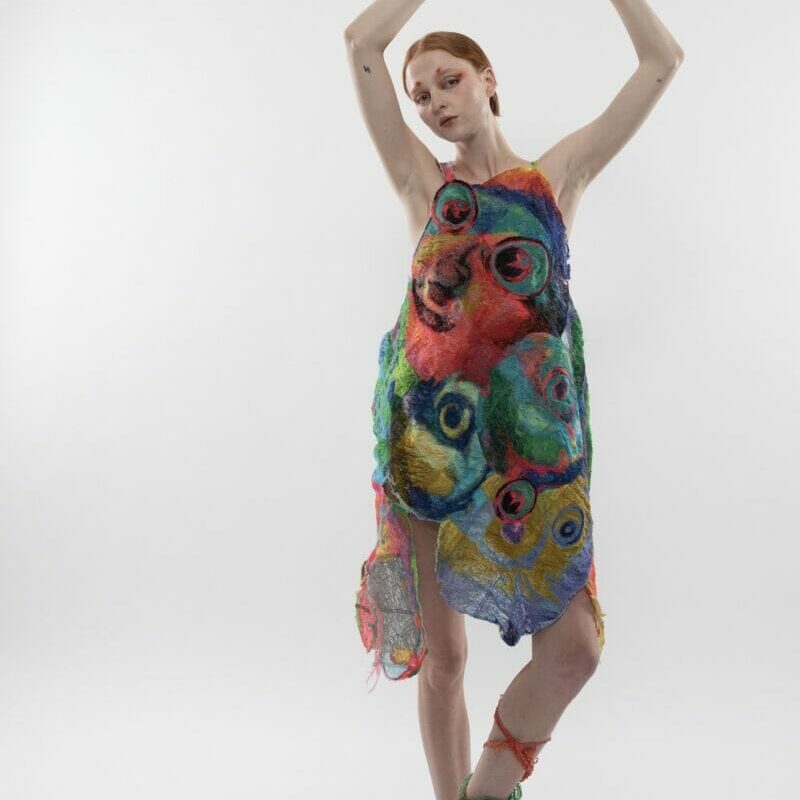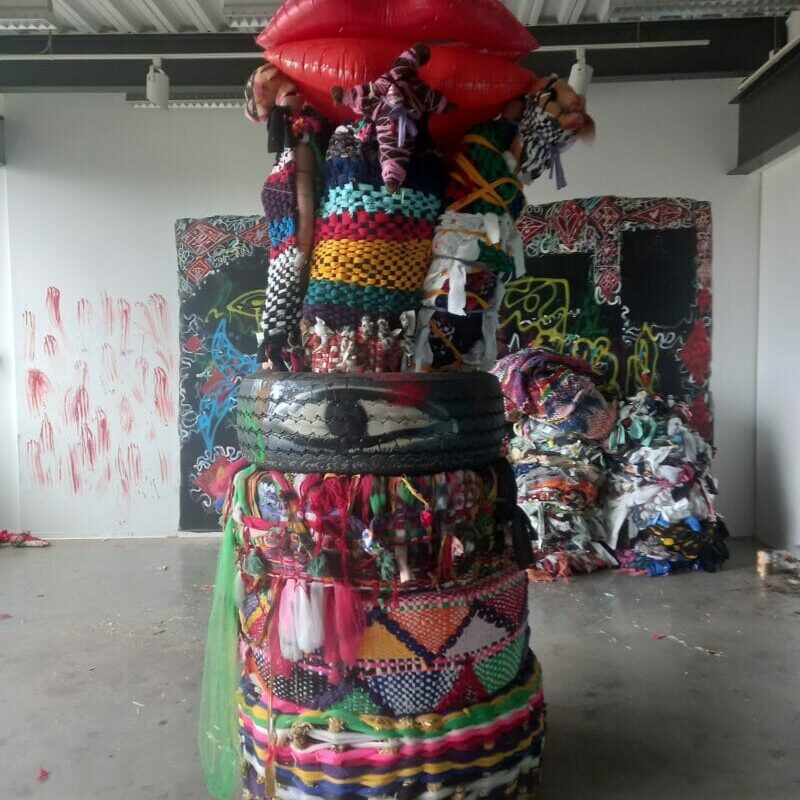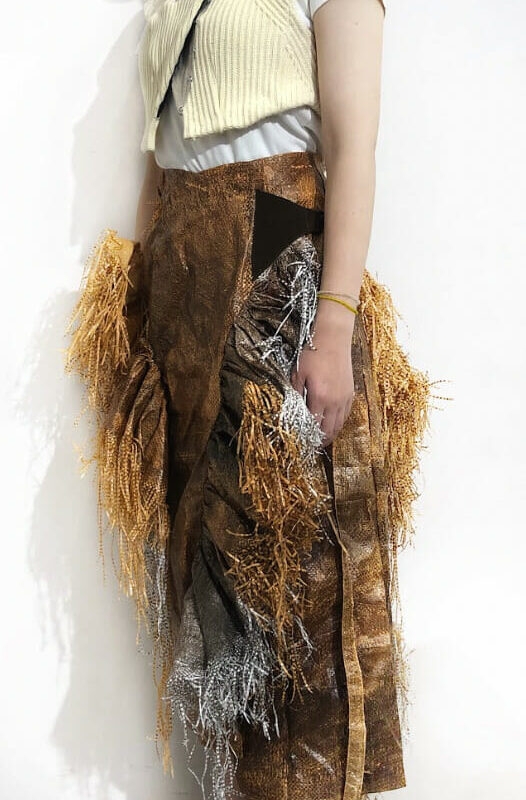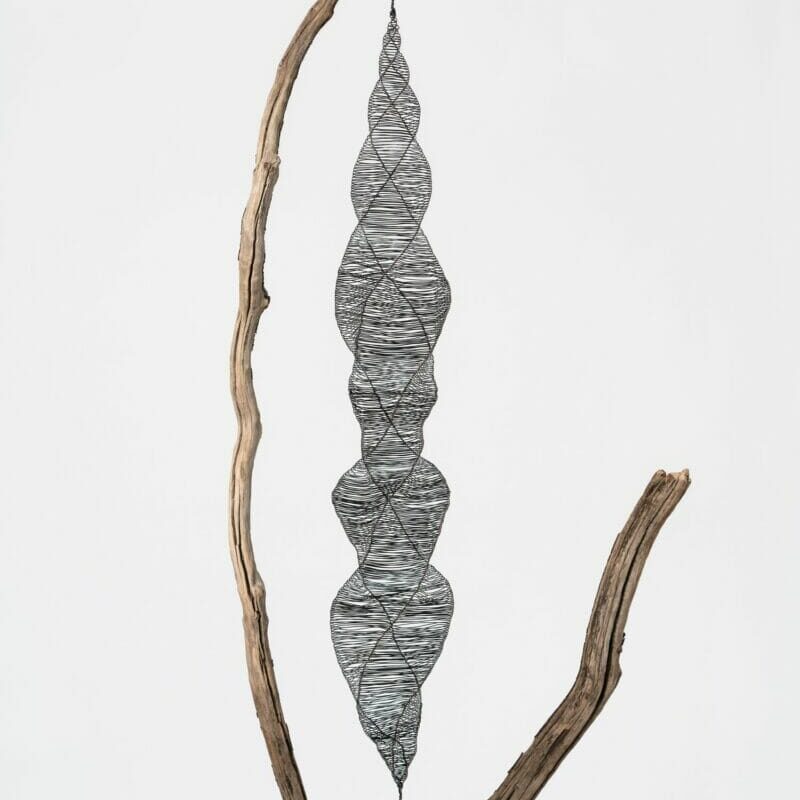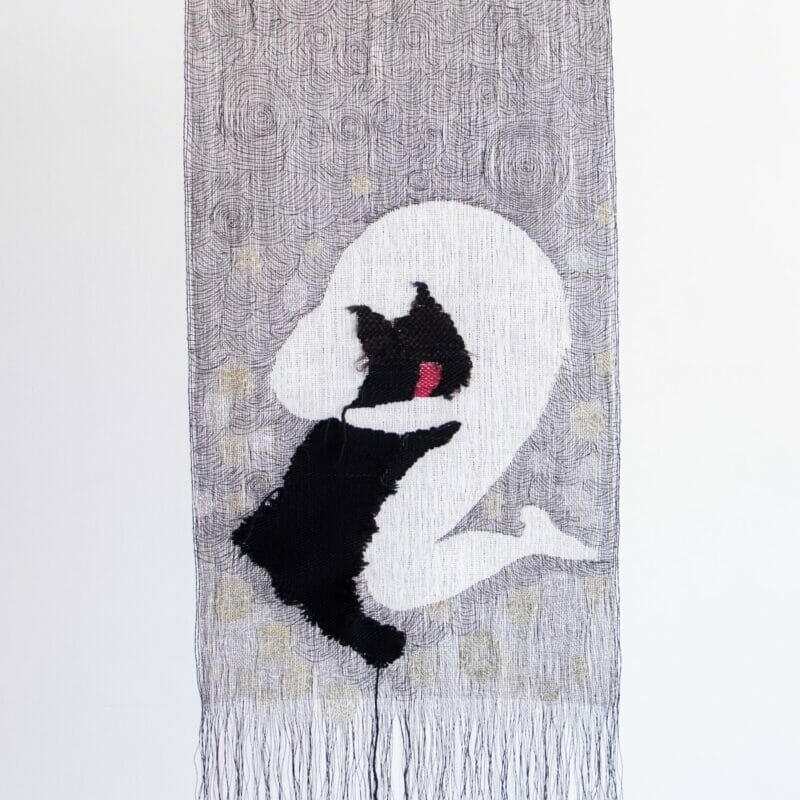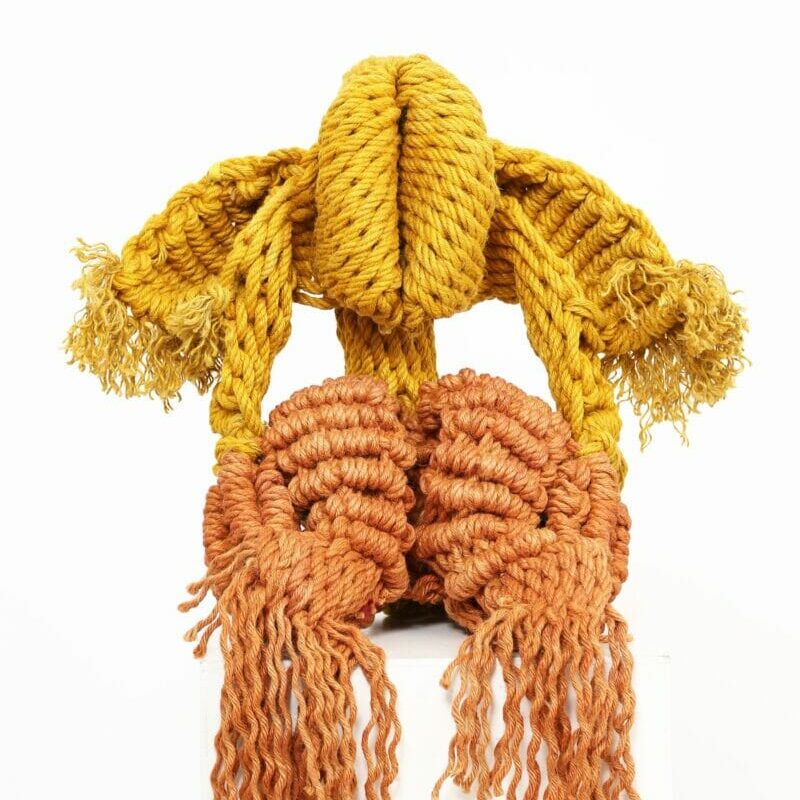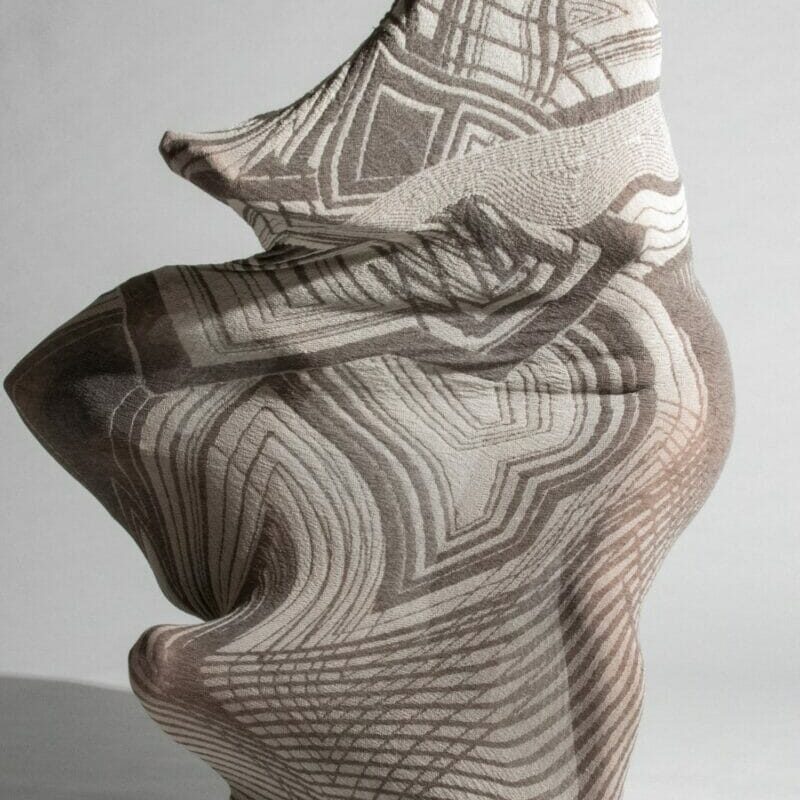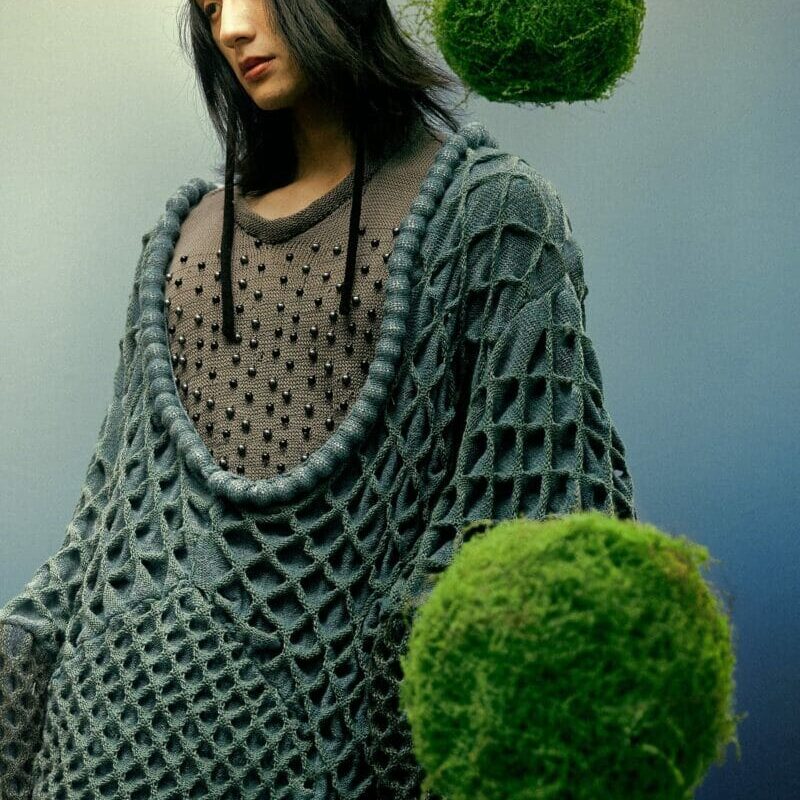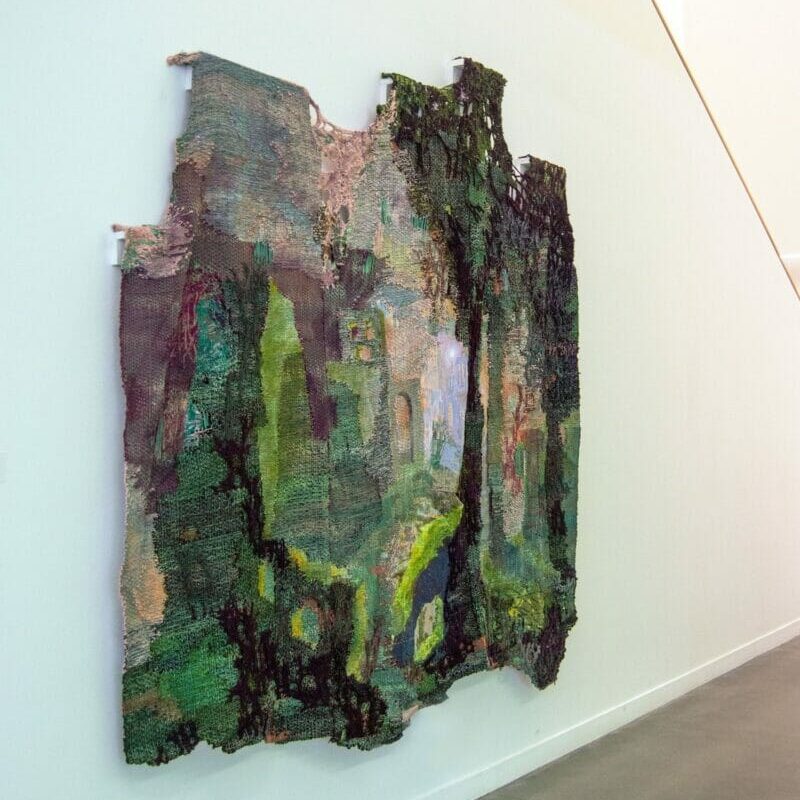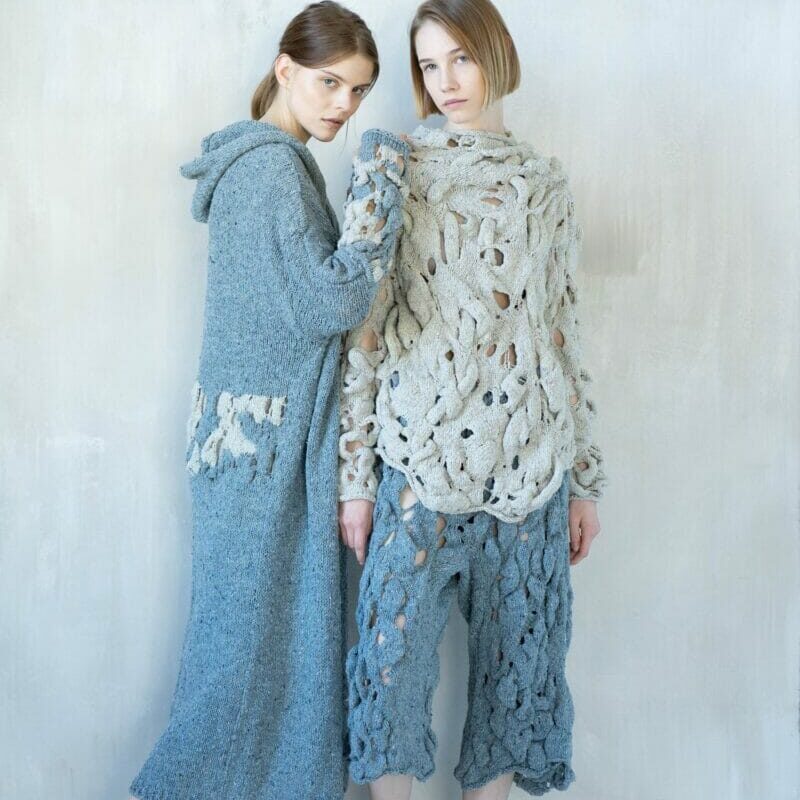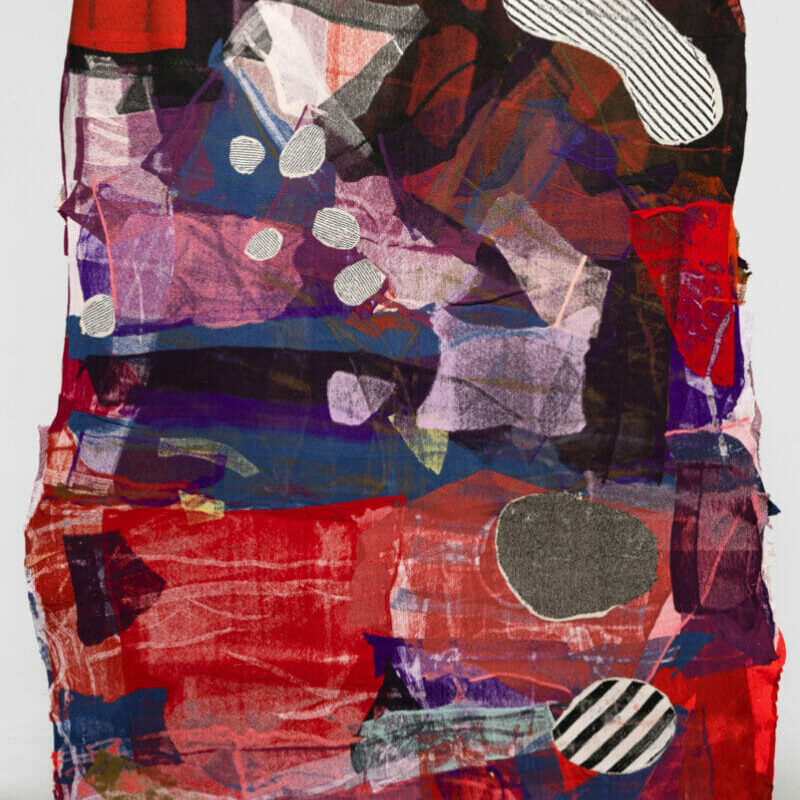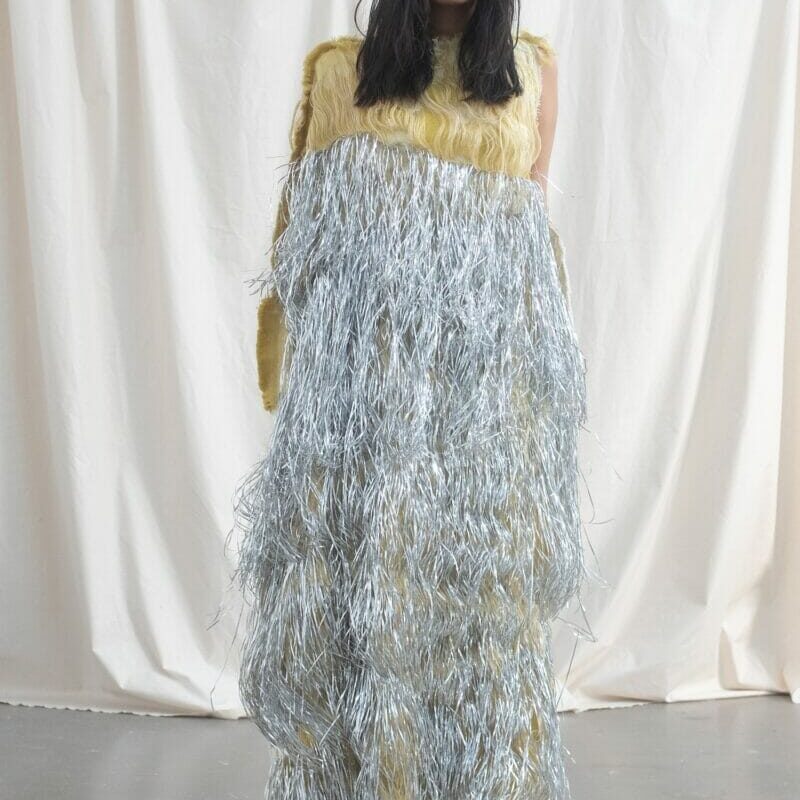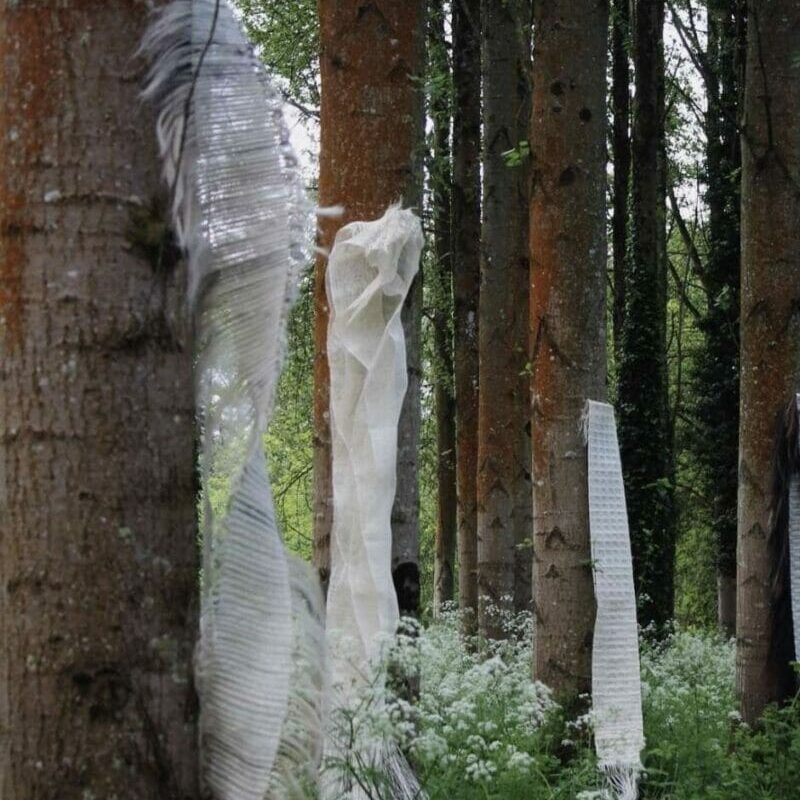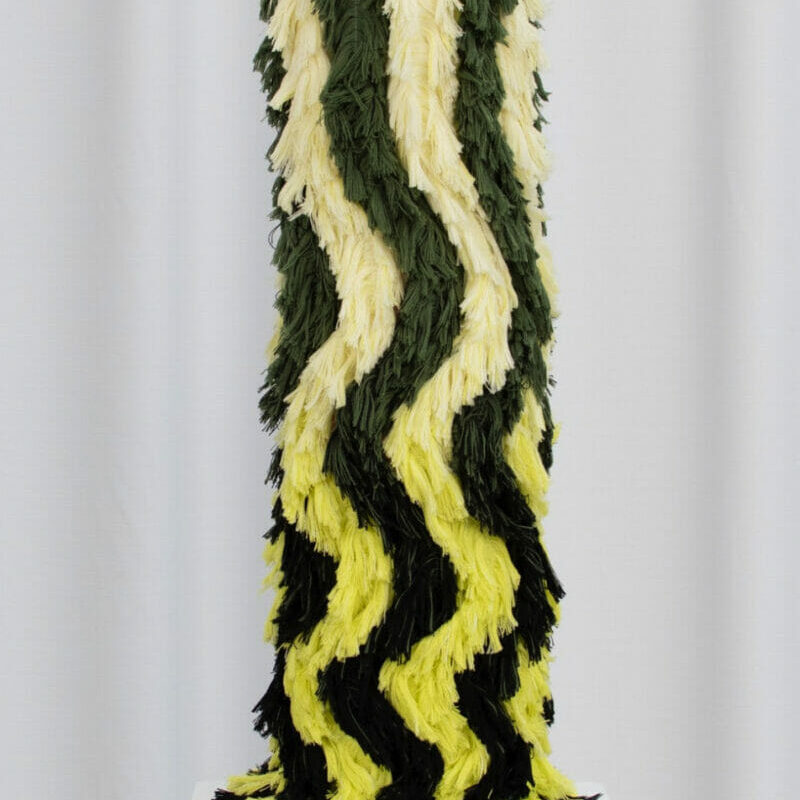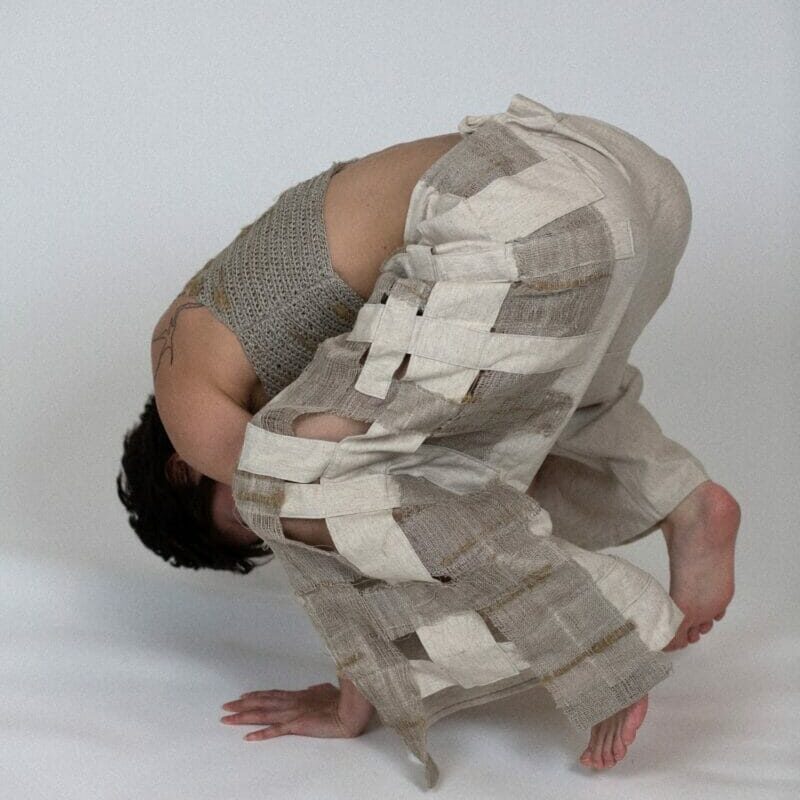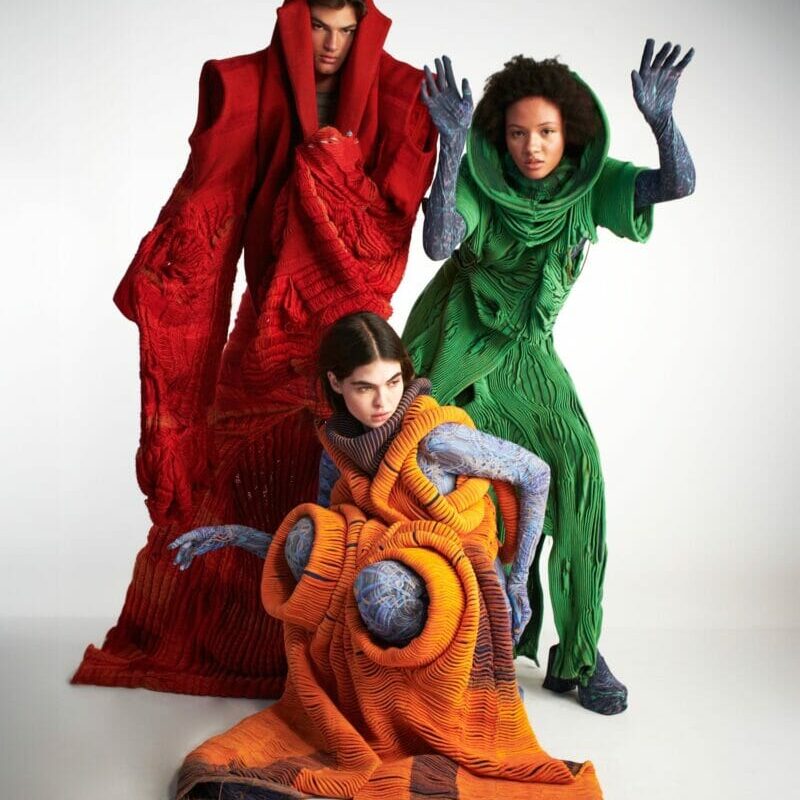JING PEI, vincitore del Premio internazionale di design tessile Dorothy Waxman per il 2023
https://www.textilemonth.nyc/
Questa serie è stata realizzata solo con filo, utilizzando tecniche di ricamo e cucito libero. Tre i tipi di filo: il poliestere per il ricamo a macchina, il cotone per il ricamo a macchina e il cucito libero su macchina da cucire, e la seta per il cucito a mano per collegare piccoli pezzi e ricamare a mano i dettagli. Utilizzando il filo come unico materiale, la collezione ha raggiunto il principio di zero rifiuti e ha causato zero inquinamento solido all’ambiente. Tutti i fili sciolti rimasti sono stati cuciti nel tessuto. Questo approccio innovativo non solo ha eliminato gli sprechi, ma ha anche migliorato l’integrità strutturale dei capi. Il processo comprendeva la cucitura e il ricamo su un tessuto dissolvibile in acqua, il successivo lavaggio del tessuto per rivelare gli intricati motivi e infine la connessione di questi ultimi in capi d’abbigliamento. Nell’abito corto verde, i motivi ripetuti sono stati ricamati per imitare la struttura della maglia come base, stratificata con facce grottesche per realizzare un’estetica coerente. I cinque capi hanno creato un mondo “pacchiano” formato da statue che vivono nei boschi con vecchie lenzuola e decorazioni per la casa.
Questa raccolta racconta come si sono formate le mie preferenze espressive, analizzando gli elementi estetici comuni della mia educazione e affrontando la mia paura per le statue grottesche e pacchiane. Ricordo di averle viste a una mostra di luci e statue al Festival delle Lanterne. Le fattezze scadenti e l’aspetto inquietante mi hanno lasciato un’impressione profonda e da allora ho sempre considerato di cattivo gusto lo stile eccessivamente colorato. Come designer, questa esperienza mi ha fatto riflettere sulla mia avversione per la pacchianeria e sul suo effetto sul mio senso della bellezza. Ho scoperto che gli elementi pacchiani sono ovunque e che i bambini come me in Cina sono cresciuti con essi. Per trasformare il brutto in bello, ho esplorato l’uso di colori vivaci e brillanti presenti in questi elementi dell’infanzia, come la biancheria da letto della generazione dei miei nonni e le vecchie decorazioni per la casa, e li ho incorporati nei miei disegni. Ho combinato mostri pacchiani provenienti da statue reali e dalla mia immaginazione in capi d’abbigliamento. Insieme, questi elementi creano un arazzo ipnotico di arte, sostenibilità ed espressione creativa.
JING PEI



